Ready for the last part of my long post about the tourist areas of Tuscany? I published the first article a few weeks ago with the title Where should we base ourselves in Tuscany? and the second article a few days ago with the title What to see in Southern Tuscany?
Today, I am going to very quickly present the different areas that people can visit in northern Tuscany.
I should repeat that of course, there are common features, but there are also very distinctive characteristics that make each one of these areas unique and clearly distinguishable from the other ones.
Here is a map of Tuscany with the main cities of the northern area of the region.

Here is some information about the main tourist areas. I already talked about Chianti, Val di Cecina, and Val di Cornia in my post on southern Tuscany, but, as they extend over the heart of the region, they obviously stretch into its northern part too.
Val d’Elsa
 Val d’Elsa was also mentioned in my previous article, but there are many pretty towns that are in northern Tuscany so I thought it would be best to mention it again here. I am thinking of lovely Certaldo, Castelfiorentino and Gambassi Terme.
Val d’Elsa was also mentioned in my previous article, but there are many pretty towns that are in northern Tuscany so I thought it would be best to mention it again here. I am thinking of lovely Certaldo, Castelfiorentino and Gambassi Terme.
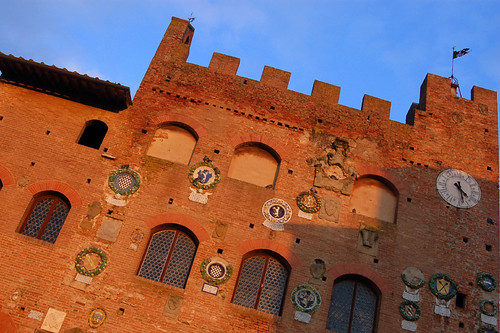
(Certaldo by Dottorpeni)
Val di Cecina
 This is the Valdorcia of Northern Tuscany. An area that is known to few travelers to Tuscany, and yet it boasts spectacular landscapes, characterized by gentle rolling hills and small hamlets such as Montecastelli and Castelnuovo Val di Cecina. The beautiful Volterra is in this area, but farther south.
This is the Valdorcia of Northern Tuscany. An area that is known to few travelers to Tuscany, and yet it boasts spectacular landscapes, characterized by gentle rolling hills and small hamlets such as Montecastelli and Castelnuovo Val di Cecina. The beautiful Volterra is in this area, but farther south.
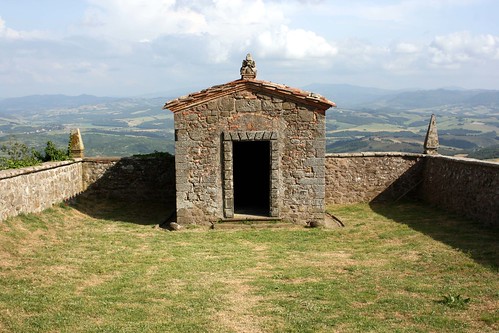
(Montecatini Val di Cecina by ObbiettivoPeperino)
Valdarno
 A large diverse area along the river Arno. The best part is in my opinion in the Pisa area, with the beautiful countryside around the hilltop town of San Miniato. The town itself is very pretty, with a large Cathedral, an imposing seminary, and a nice town hall.
A large diverse area along the river Arno. The best part is in my opinion in the Pisa area, with the beautiful countryside around the hilltop town of San Miniato. The town itself is very pretty, with a large Cathedral, an imposing seminary, and a nice town hall.
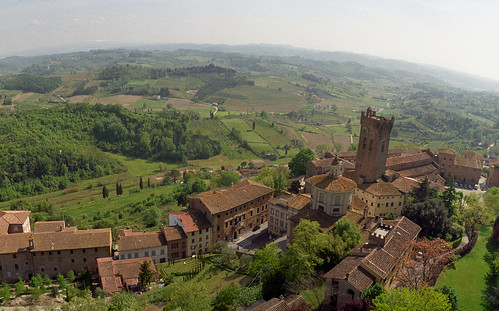
(San Miniato by Ezioman)
Mugello
 Mugello is north of Florence, on the Apennines. It’s dotted by small towns and famous for the many medieval pievi, small parish churches in the countryside. The area is also famous for the main speedway in Italy: Autodromo del Mugello.
Mugello is north of Florence, on the Apennines. It’s dotted by small towns and famous for the many medieval pievi, small parish churches in the countryside. The area is also famous for the main speedway in Italy: Autodromo del Mugello.

(Mugello, photo by Bosphoreion)
Florence
 Of course Florence needs no introduction. Near Florence, Fiesole is a nice place too see. The rest of the surrounding area is mostly residential and industrial, so no point in venturing in the suburbs… unless you want to go shopping at Ikea!
Of course Florence needs no introduction. Near Florence, Fiesole is a nice place too see. The rest of the surrounding area is mostly residential and industrial, so no point in venturing in the suburbs… unless you want to go shopping at Ikea!
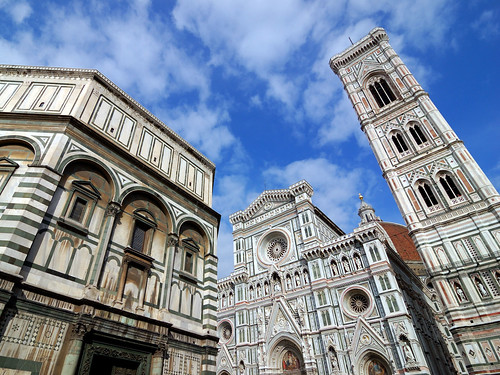
(Florence, photo by Rosino)
Prato and Pistoia
 The area is quite industrialized and densely populated, but the two cities are remarkable. They have beautiful city centers. Prato is famous for the textile industry, while Pistoia is famous for the greenhouses. It also has a popular zoo and not far from it, a popular destination is Collodi, the home town of Pinocchio’s author. Montecatini Terme is a famous spa town: the art nouveau spa center is very beautiful. The old village, Montecatini Alto is really cute too.
The area is quite industrialized and densely populated, but the two cities are remarkable. They have beautiful city centers. Prato is famous for the textile industry, while Pistoia is famous for the greenhouses. It also has a popular zoo and not far from it, a popular destination is Collodi, the home town of Pinocchio’s author. Montecatini Terme is a famous spa town: the art nouveau spa center is very beautiful. The old village, Montecatini Alto is really cute too.

(Prato by Rob Meredith)
Valle del Serchio
 The valley along the river Serchio north of Lucca. This is a very beautiful area, with small villages and larger towns along the river, small bridges, stone mills and many old paper factories. Interesting sites in this area include Barga, Borgo a Mozzano and the famous Devil’s Bridge, Bagni di Lucca and the nature reserve called Orrido di Botri.
The valley along the river Serchio north of Lucca. This is a very beautiful area, with small villages and larger towns along the river, small bridges, stone mills and many old paper factories. Interesting sites in this area include Barga, Borgo a Mozzano and the famous Devil’s Bridge, Bagni di Lucca and the nature reserve called Orrido di Botri.

(Barga by Bill Anderson)
Abetone
 This is the second highest mountain in Tuscany and a very popular ski resort. It’s on the border with Emilia Romagna, in the province of Pistoia. It’s quite well-known in Italy and it is the perfect place to bring together a vacation on the snow and a holiday in Tuscany.
This is the second highest mountain in Tuscany and a very popular ski resort. It’s on the border with Emilia Romagna, in the province of Pistoia. It’s quite well-known in Italy and it is the perfect place to bring together a vacation on the snow and a holiday in Tuscany.
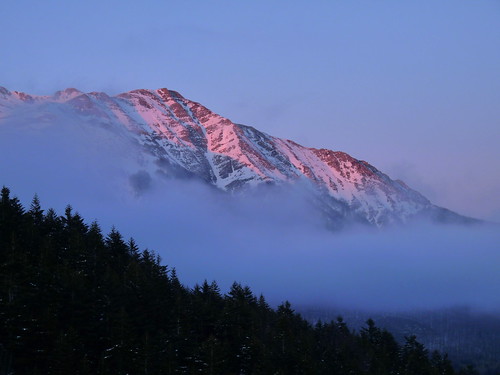
(Abetone by Lo.Tangelini)
Lucca
 A beautiful city with the city center entirely enclosed within perfectly preserved city walls where people can bike, take a walk and relax. It is just beautiful in any season, but my favourite season in Lucca is the fall, when all the trees along the walls turn yellow. The area is also known for the beautiful ville lucchesi, splendid mansions in the countryside.
A beautiful city with the city center entirely enclosed within perfectly preserved city walls where people can bike, take a walk and relax. It is just beautiful in any season, but my favourite season in Lucca is the fall, when all the trees along the walls turn yellow. The area is also known for the beautiful ville lucchesi, splendid mansions in the countryside.
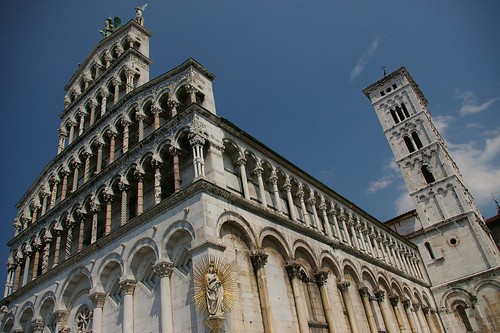
(Lucca by Dvdbramhall)
Garfagnana
 The Garfagnana is the mountain area north of Lucca, with famous towns such as Castelnuovo di Garfagnana. It is home to a nature park called Parco dell’Orecchiella and it is famous for its chestnuts. There are many small hamlets immersed in the woods which have been abandoned and for this reason Garfagnana is a walker’s paradise.
The Garfagnana is the mountain area north of Lucca, with famous towns such as Castelnuovo di Garfagnana. It is home to a nature park called Parco dell’Orecchiella and it is famous for its chestnuts. There are many small hamlets immersed in the woods which have been abandoned and for this reason Garfagnana is a walker’s paradise.
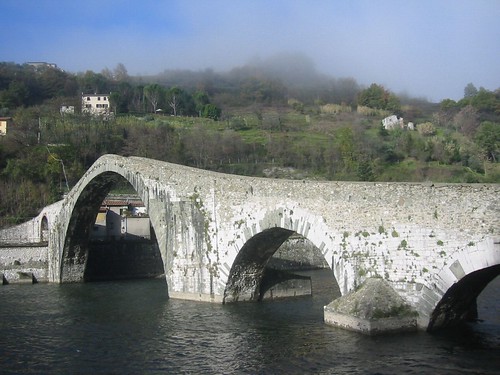
(Garfagnana by Flickrc)
Lunigiana
 Lunigiana is the area along the river Magra. It is cut through the ancient Via Francigena and it is one of the lesser known areas of Tuscany, yet still a fascinating one. It’s on the Appennines on the border with Emilia Romagna and Liguria. It’s a land of old countryside churches and legends.
Lunigiana is the area along the river Magra. It is cut through the ancient Via Francigena and it is one of the lesser known areas of Tuscany, yet still a fascinating one. It’s on the Appennines on the border with Emilia Romagna and Liguria. It’s a land of old countryside churches and legends.

(Lunigiana by nigelfj)
Massa and Carrara
 Massa and Carrara, famous for their marble and for the Apuan Alps. Two cities overlooking the coast of the Versilia. The cities are neat, and definitely off the beaten path. The marble caves are worth a visit: Michelangelo used it for his masterpieces and it’s famous throughout the world.
Massa and Carrara, famous for their marble and for the Apuan Alps. Two cities overlooking the coast of the Versilia. The cities are neat, and definitely off the beaten path. The marble caves are worth a visit: Michelangelo used it for his masterpieces and it’s famous throughout the world.
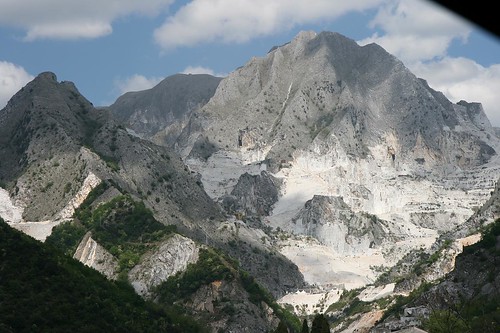
(Marble caves near Carrara, by Artnbarb)
Versilia
 The Versilia is the most popular beach area in Tuscany, but it is also very interesting for its landscape. There are mountains right behind the coastline. The most popular towns are Viareggio, famous for its carnival, Pietrasanta, and Forte dei Marmi. They are very lively in the summer and many VIPs choose these destinations for their beach holidays.
The Versilia is the most popular beach area in Tuscany, but it is also very interesting for its landscape. There are mountains right behind the coastline. The most popular towns are Viareggio, famous for its carnival, Pietrasanta, and Forte dei Marmi. They are very lively in the summer and many VIPs choose these destinations for their beach holidays.
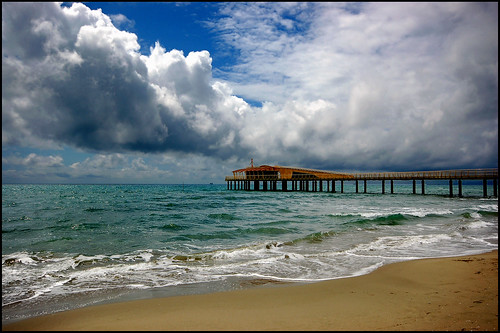
(Versilia by Luigi9555)
Pisa
 Pisa and its surroundings. The city of Pisa is mostly famous for the Leaning Tower, but it has much more than that to offer. The best time of the year to visit the city is June. Besides Piazza dei Miracoli the city boasts many interesting monuments. Just outside the city, the Chartreuse of Calci and the Abbey of San Piero a Grado are worth seeing. The area is rich in hot springs too.
Pisa and its surroundings. The city of Pisa is mostly famous for the Leaning Tower, but it has much more than that to offer. The best time of the year to visit the city is June. Besides Piazza dei Miracoli the city boasts many interesting monuments. Just outside the city, the Chartreuse of Calci and the Abbey of San Piero a Grado are worth seeing. The area is rich in hot springs too.
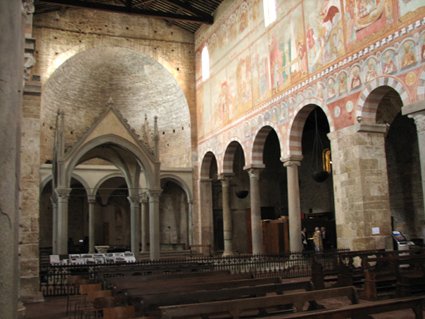
(Basilica di San Piero a Grado, Pisa)
Livorno
 Livorno is a large industrial city. The city center is not bad, and it has been recently restored so as to be more appealing to visitors. The American market area is neat. Just outside the city, the Monastery of Montenero is worth a visit. There are breathtaking views from the top of the hill. The coast south of the city is also impressive, with a rugged coastline and secluded coves.
Livorno is a large industrial city. The city center is not bad, and it has been recently restored so as to be more appealing to visitors. The American market area is neat. Just outside the city, the Monastery of Montenero is worth a visit. There are breathtaking views from the top of the hill. The coast south of the city is also impressive, with a rugged coastline and secluded coves.
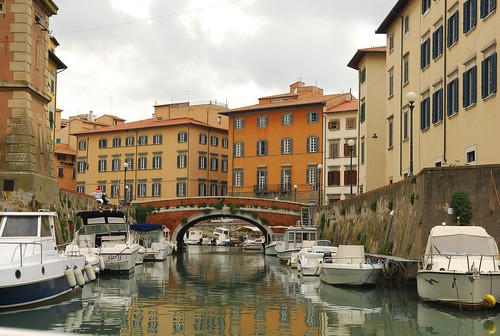
(Livorno by swamp dragon)
Pisa is an excellent base in northern Tuscany because it’s an important transportation hub. You do not need a car to visit the major sites. Of course if you want to venture up into the Garfagnana, Lunigiana or Val di Cecina area, then you will need a car, like in most rural areas of Tuscany. But there are plenty of places that you can reach from Pisa by public transportation and if you want to rent a car for the day, all you have to do is to go to the airport. Besides, the city is really underrated: if you dare venture away from the Leaning Tower, far from being a tourist trap, Pisa is a University city, with many lively locals, plenty of restaurants and many cultural events. I write about Pisa often here on the blog, because we work in the city so we spend weekdays there. Of course we also have a special place to recommend… Behind the Tower, our vacation rental near the Leaning Tower of Pisa! Check it out!


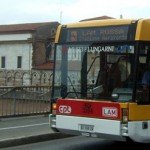
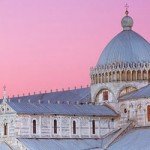
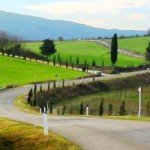

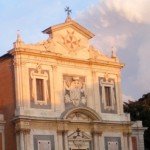



I had a day in Florence many years ago and loved the city. I have always wanted to go back. I’ve also always wanted to visit the Tuscany area. The info on this blog is really helpful on place to visit in that region. Michelangelo is one of the greatest artists ever so I would love to visit the marble caves at Mass aand Carrar as an historical interest, and of course the leaning tower of Pisa, that would be a must.
Thanks for stopping by!
I remember staying at a strange little place near Pisa where the flowery wallpaper in the bedroom also covered the door of the wardrobe and the bathroom door and the back of the door to the room, so it was like being enclosed in an interior flower garden. I know this sounds a little strange, but I’ve never forgotten it. And oh yes, the tower was pretty cool too – it was smaller than I imagined – but has a big presence.
Hi, we are looking at villas for a holiday in June in Northern Tuscany in the area of camporgina … would you recommend it … what sorts of things are there to do/see/experience in the area north of Lucca?
I am not an expert I am afraid. The Garfagnana is very pretty, mostly old towns with pretty views. Thecoast of the Versilia is also not far from it.
Hello Gloria, I love your blog…I’m traveling with 7 women in October 2013 to northern Tuscany. We are aspiring writers and painters, and so looking forward to our trip. I’ll follow you as I get ready. ..Susan
We are travelling to Italy in June 3013 with two small children 4 & 2 – trying to work out where we should base ourselves in Northern Tuscany for 10 days. Looking at a small house in the hamlet of Tempagnano, Lucca – it is very affordable (which is important!) but worried it may be a little isolated. What would you recommend? Thank you.
Ciao Kate, well, Tempagnano is in the Garfagnana area, a 30 min. drive to Lucca. It depends on what you want to do. If you want to go on daytrips every day, just keep in mind that, except for the beautiful Garfagnana towns, reaching anything involves reaching Lucca first. It is not terribly remote. And I am a big fan of Garfagnana. I guess with a 4 y.o and a 2 y.o. you want to take it easy, don’t you?
I am travelling to Pistoia in late September. I am looking for a natural outdoor hotspring nearby. Would rather not go to a spa. Any suggestions?
Sorry, I do not know the area well enough to recommend any natural hot spring… I know there are two large spa towns near Pistoia (Montecatini Terme and Monsummano Terme) but I am not sure if there are free hot pools like in southern Tuscany. Sorry!
Great guide, my wife and I are flying into Pisa at the end of June and have 3 full days to explore tuscany from a base at Bongo San Lorenzo. We have booked a hotel in Pisa on the last night so we are close to the airport and want to spend that day driving the best scenic route from Borgo san Lorenzo to Pisa. Do you think we would have time to go via Siena? and do you any recommendations for places to visit on that route
I have only just seen your comment, I am very sorry. Maybe you can tell us how it all went?
We have 5 nights booked in San Remo from 23 September 2016 and our flight home from Nice on 28th. Before we arrive in San Remo we would like to possibly fly to Florence and make our way from there to San Remo over a twelve day period. Have you any suggestions as to where we should visit on our journey, we are not youngsters so would like to keep the driving to a minimum.
Hope you can help.
Thank you
There are many things you can see between Florence and San Remo in 12 days. Pisa, Lucca, Pistoia, Cinque Terre, all the beautiful towns on the coast of Liguria.
Hi Looking for an authentic, preferably untouched Tuscany hotel within striking distance of Pisa/Luca. Truly Tusan rather than 5 star..? A rural retreat, awya from the city bustle..?
untouched and Tuscany don’t go together I am afraid! LOL